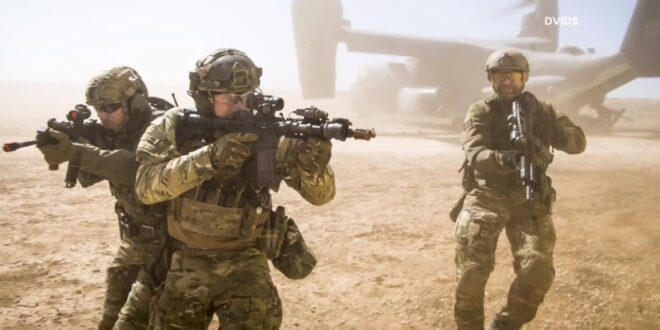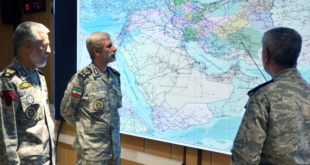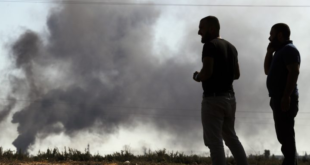A monumental potential shift is on the horizon for the U.S. Army. At the heart of this sea of change lies a proposition to reduce special operations forces (SOF) programs by an estimated 10% in the forthcoming years. This decrease is part of a larger migration from unconventional warfare to an emphasis on conventional capabilities and larger-scale combat operations.
A Two-Decade Reliance on Special Operations Forces
The U.S. military’s reliance on its special operations forces for counterinsurgency operations has been integral over the past two decades. The number of U.S. special operations forces across all military branches doubled after the events of 9/11. This increase reflected the new reality of the Global War on Terror, with swift nighttime raids and training militias in the Middle East and Africa becoming central to the U.S. strategy. However, this trend is poised for a significant reconfiguration.
The Total Army Analysis, a strategic planning methodology used by the Army, projects a budget request for fiscal years 2025 to 2029, suggesting a roughly 10% reduction to SOF. The proposed reductions would mainly affect logistical and intelligence support—often called enablers—and could result in structural changes to some elite units.
The motivation behind this strategic pivot is fueled mainly by a change in geopolitical attention, focusing on potential conflict scenarios with nations like China. The Pentagon is redirecting its resources towards capabilities such as long-range missile strikes and cyber warfare, which are more relevant to these large-scale combat operations.
A Controversial Proposal and Its Critics
However, this strategic shift is not without contention. Opinions vary, with some lawmakers voicing serious reservations about the proposed cuts. This concern is particularly noticeable among Republicans, who, at recent hearings, contended that it would be a misjudgment to presuppose that SOF would be less critical in a conflict with China.
Retired Lt. Gen. Ken Tovo, former commanding general of Army Special Operations Command, has also expressed his disquiet over the proposed cuts. He warns that if the reductions affect the intelligence community, crucial to the functioning of special operations forces, the consequences could be “crippling” and “devastating.”
Pending Decisions and Their Potential Impacts
This strategy, awaiting the green light from Army Secretary Christine Wormuth, is part of a broader evaluation of force structure as the Army grapples with a recruiting decline and potential reductions in its overall force size. The timeline for implementing the cuts—whether in 2025 alone or until 2029—remains a subject of deliberation.
While the Army’s future force structure remains under consideration, Army leaders are studying how to optimally structure the force to deter adversaries and win future battles. This strategic reorientation significantly departs from the Army’s recent emphasis on counterterrorism operations.
The Debate over the Future of U.S. Special Operations Forces
As the Army evaluates this new strategic trajectory, it is apparent that the implications could be broad and far-reaching. SOF have been central to U.S. military operations over the last two decades, and any changes to their structure and funding could profoundly affect the U.S. military’s capabilities.
The proposal marks a crucial juncture for the U.S. Army and its most elite warriors. The SF’s role is being scrutinized as the military shifts toward potential large-scale conflicts with near-peer adversaries. While some see this as an essential adaptation to evolving threats, others caution against the potential risks of scaling back capabilities that have been at the heart of U.S. military operations for the past two decades.
In the face of growing global threats, the debate surrounding the future of U.S. special operations forces is vital. As Senator Joni Ernst, the ranking member of the Senate Armed Services Committee’s emerging threats subpanel, noted at a recent hearing, “We can’t get to a point where we’re faced with a crisis, and we do not have the operators that are able to step forward.”
The fate of the U.S. SOF remains uncertain. For now, the debate continues, with consequential decisions awaiting on the horizon. This issue underlines the complex challenges faced by the U.S. military as it navigates the changing contours of global security in the 21st century.
The Future of SOF in the U.S. Military
In conclusion, the proposed reduction in SOF programs marks a significant moment of change for the U.S. Army. As the nation’s military strategy undergoes reassessment, focusing increasingly on potential large-scale conflicts with countries like China, the emphasis is shifting from counterinsurgency towards more conventional warfare capabilities. The debate over this paradigm shift reflects the complexity and multi-dimensional challenges the U.S. military faces in today’s rapidly evolving geopolitical landscape.
Critics of the proposed cuts underscore the vital role that special operations forces have played in the U.S. military operations over the past two decades. Their concerns highlight the potential risks of reducing these battle-tested capabilities. However, supporters argue for the need to adapt to emerging threats, emphasizing the necessity for capabilities like long-range missile strikes and cyber warfare.
Ultimately, the decision hinges on a strategic evaluation of the best way forward to maintain U.S. military dominance while effectively responding to new threats and challenges. This pivotal juncture demands a careful and balanced approach to ensure the U.S. military remains prepared and effective, no matter the nature of the battles it may face in the 21st century.
 Eurasia Press & News
Eurasia Press & News




